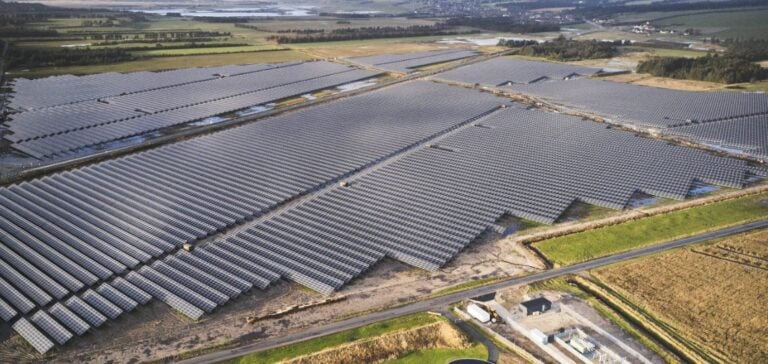In 2024, the European Union reached a major milestone in its energy transition. For the first time, solar energy produced more electricity than coal, according to a report published by the think tank Ember. This shift symbolizes the accelerating move toward renewable energy sources, a trend further bolstered by the ongoing decline in the use of fossil fuels in the region.
The share of renewable energy in the electricity production of the 27 EU countries reached a new record, representing nearly 47% of the total. This marks a significant increase from 2019, when renewable energy accounted for just 34% of electricity production. In parallel, the share of fossil fuels, including coal and natural gas, dropped from 39% in 2019 to 29% in 2024.
This progress has been largely driven by the rapid growth of solar energy, which, combined with a rebound in hydropower production, has significantly reduced the EU’s dependence on fossil fuels. Indeed, electricity generation from gas has declined for the fifth consecutive year, a sign of a structural transformation underway in the European energy sector.
The economic impact of this transition is also noteworthy. Chris Rosslowe, the lead author of the report, highlighted that the growth of solar and wind energy has allowed the EU to avoid fossil fuel imports worth 59 billion euros since 2019. These savings have strengthened the region’s energy resilience and contributed to the reduction of greenhouse gas emissions.
However, despite these advances, experts warn that much remains to be done. While solar continues to grow, wind energy must expand further. According to Ember, the EU’s wind capacity needs to more than double by 2030 to meet the Union’s climate goals and maintain this momentum in the energy transition.
The reduction in coal production is also evident in several European countries. More than half of the EU member states have either completely eliminated coal from their energy mix or reduced its share to less than 5%. This phenomenon demonstrates the rapid shift in Europe’s energy priorities, where climate concerns are intertwined with economic and geopolitical considerations.
The Challenges to Overcome
While the EU has made significant progress, integrating renewable energy into the electricity grid remains a major challenge. The fluctuations in solar energy production, depending on the seasons and weather conditions, require strengthening energy storage and demand management infrastructures. Solutions such as energy storage and smart grid technologies will be essential to ensure the stability of energy supply.
A Model for the Future?
The evolution of the European energy mix could serve as a model for other regions of the world, particularly emerging economies. As the costs of solar and wind technologies continue to decrease, the EU demonstrates that the energy transition is not only possible but also economically advantageous in the long term. However, the path ahead is still fraught with challenges, and greater cooperation between member states will be crucial to maximizing the benefits of this transformation.






















